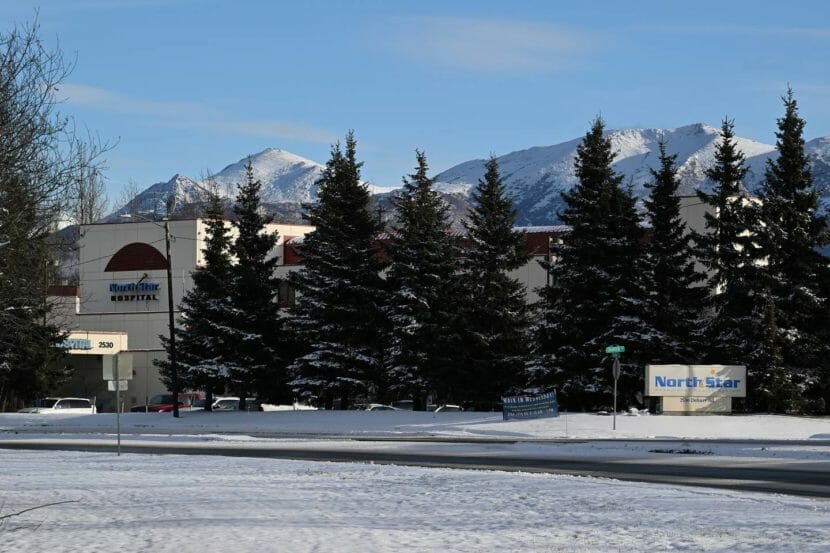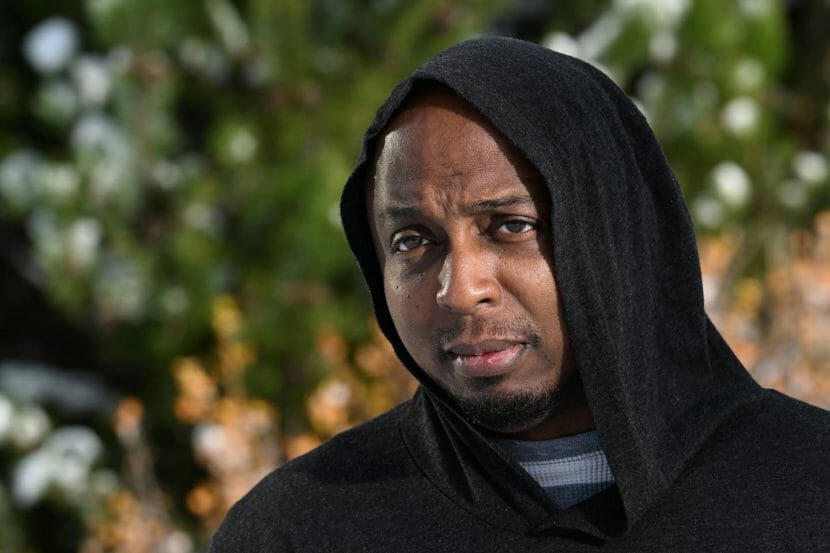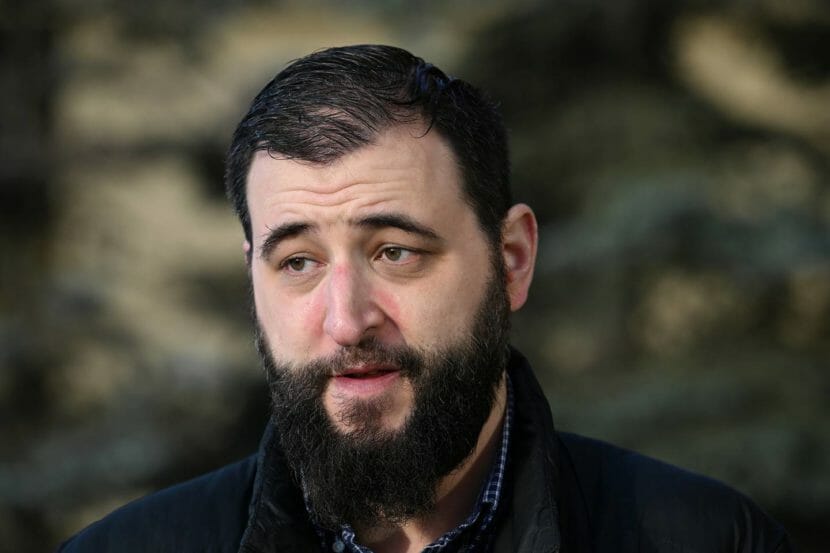
Nick Petito saw a lot in the six months he worked at North Star hospital in Anchorage.
Petito wasn’t a therapist. He wasn’t a social worker. He was the maintenance manager, charged with fixing what was physically broken at Alaska’s only psychiatric hospital for children.
It was a job that put him in all parts of North Star’s campus in East Anchorage, sometimes working 10-hour days fixing holes in drywall, resetting pulled fire alarms and rekeying doors.
As the days stretched into months, Petito said, “I watched it rapidly turn to absolute chaos.”
“It got to the point where we were having multiple riots every week,” he said of escalating destruction during his time at the hospital. “And I mean riots, all out. We did the maintenance: They would rip the walls apart and then tear apart the rooms.”
Petito is one of several former employees who describe long-standing issues at North Star that seemed to worsen in recent months, as understaffing and decisions by management pushed the hospital to the brink of disaster.
Public records illustrate the rising chaos: In the six months Petito worked at North Star, from April to September 2022, Anchorage police were called to the hospital campus 71 different times, responding to reports that included assaults and escapes. During the same period the year earlier, police were called only about half that often, 34 times in total.
Three different layers of regulators — federal, state and the organization that accredits hospitals for quality and safety — have all warned North Star of unacceptable conditions this year. Most recently, in early November, the powerful Joint Commission handed down a “preliminary denial of accreditation” to the hospital, pointing to an unnamed “condition which … poses a threat to patients.” Hospitals that lose such accreditation face serious repercussions, including eventually not being able to accept Medicare and Medicaid. Hospitals can appeal. North Star is working to resolve the issues, said North Star’s CEO Anne Marie Lynch in an email.
Three former employees — a psychiatric aide who worked directly with patients, a therapist, and Petito, the former maintenance manager — were willing to speak with the Daily News about their experiences working at North Star. Two other former employees corroborated details but were not willing to be identified publicly by name because they were worried about professional repercussions.
All of them said the same thing: The hospital failed to hire, train and retain staff to safely manage a volatile group of patients. One worker said Anchorage School District teachers who were supposed to deliver lessons to patients refused to enter the hospital because of dangerous conditions. Another said faulty fire alarm protocols combined with understaffing led to regular escapes by at-risk kids.
North Star disputed some, but not all, of the assertions of the former employees, saying patient privacy rules bar them from discussing specific cases and patients. The hospital is staffed “to regulations as well as for safety needs” and is actively recruiting new workers, wrote Lynch. The idea that there are multiple riots every week is “simply false,” Lynch wrote in response to the former employee’s assertions.
Lynch also shared a statement taken almost word-for-word from marketing materials on an “About North Star Behavioral Health” page on the company’s website.

“Our dedication is demonstrated every day as we help young people and families deal with difficult problems,” the statement read. “Our commitment shows in the professional guidance, counseling and support for children, and caring responsiveness that we offer to parents and families.”
Lynch also pointed to patient satisfaction data published by North Star that shows patients agreed with statements such as “I knew my treatment plan goals,” “I understand the importance of following my discharge plan” and “I feel better now than when I was admitted.”
North Star’s patients — some as young as 4 years old — are among the most vulnerable children in Alaska, sent to live in a locked facility away from family, with the promise that hospitalization will relieve acute psychiatric and behavioral problems.
Trouble with regulators
Three regulators — the federal Centers for Medicare and Medicaid, the state Alaska Division of Behavioral Health, and the nonprofit safety and quality accrediting organization The Joint Commission have all documented urgent problems at North Star this year.
First, during inspections in April and June, federal investigators with the Centers for Medicare and Medicaid Services documented problems at the hospital, including “immediate jeopardy” situations at the time that put the health and safety of patients at risk. Hospitals that don’t fix such problems risk losing the ability to bill federal insurance. The hospital resolved the issues and was no longer under a “plan of correction” from the agency by September, Lynch said.
[Alaska families say their children were sexually abused at North Star psychiatric hospital]
The Alaska State Division of Behavioral Health, too, found trouble during an on-site review of the hospital system’s program for adolescent girls in August. Clinicians at the hospital told state regulators understaffing “was an area of ethical and professional concern” for them. The state reviewers also uncovered incomplete and conflicting medical notes for patients that contradicted themselves, suggesting that crucial 15-minute safety checks weren’t being done.
The state reviewers implored North Star to “hire additional staff to ensure services are being rendered safely and with quality of care.” It would be “of the utmost importance” for the hospital to hire, train and retain more workers, the state regulator wrote.
The hospital is cooperating with the state and is implementing a “plan of correction,” said Lynch.
Then, on Nov. 2, the Joint Commission handed down a “preliminary denial of accreditation” to North Star, a serious consequence. North Star had previously earned accreditation in every survey for at least the past seven years, according to Joint Commission data.
The Joint Commission cited conditions that posed a “threat to patients” and named 11 different areas where inspectors found “performance issues” at North Star. Among them: “the patient has the right to be free from neglect; exploitation; and verbal, mental, physical, and sexual abuse” and “the hospital provides care, treatment, services, and an environment that pose no risk of an ‘Immediate Threat to Health or Safety.’”
Lynch, the CEO, said the hospital was providing “full cooperation during all compliance surveys by regulatory entities.”
“When an opportunity for improvement in facility operations is identified, we promptly implement appropriate plans to address,” she wrote.
The only game in town
North Star is owned by Universal Health Services, a publicly traded, for-profit corporation that owns 335 inpatient behavioral health facilities globally. Universal Health Services reported annual revenues of about $11 billion in 2020. The public funds much of the treatment kids are supposed to get at North Star: Over the past five years, the State of Alaska paid $122 million in Denali KidCare reimbursements to North Star, according to data provided by the Alaska Department of Health.
North Star has been around since the early 1980s, when it was called Charter North and served adults as well as children. Around 2000, the State of Alaska considered buying the DeBarr Road building and relocating the Alaska Psychiatric Institute there, but the plan fell through. Universal Health Services purchased the hospital in a deal that was finalized in 2003. When the hospital expanded with a new, 60-bed facility in 2006, it was seen as an opportunity to bring kids sent Outside for psychiatric treatment home, the Daily News reported at the time.
Even then, advocates questioned the way North Star operated.
“Advocates also have raised concerns about staffing, medication and restraint practices at North Star’s existing treatment centers and psychiatric hospital,” the Daily News reported in 2006.
At the time, the hospital was the only place children under the age of 13 could be hospitalized for psychiatric conditions in the state. Twenty years later, that’s still true.
Kids find many paths to North Star, but a typical one is a child who has a combination of a mood disorder such as depression and a behavioral disorder and does something alarming — such as threatening suicide or to hurt someone else, said Dr. Curt Wengel, a child psychiatrist in private practice in Anchorage and the medical director of Alaska Behavioral Health, an Anchorage nonprofit that used to be called Anchorage Community Mental Health Services.
Family — or legal guardians if the child is in foster care — might take the child to an emergency room where an assessment would be done to determine whether they should be hospitalized or not, Wengel said.
If a child’s parents are so worried about safety that they are staying awake in shifts, that probably calls for a hospitalization, Wengel said.
The idea is to use time in a hospital to de-escalate the situation to “not an emergency,” he said. But that treatment doesn’t necessarily solve the deeper, long-term problems. In some situations, that work would be done through outpatient therapy, where a child would meet with a clinician once a week or more. In other parts of the United States, children spend relatively brief stays in psychiatric hospitals — maybe a week to 10 days at most, Wengel said. Not at North Star.
“When I first came here to Alaska, and they said the average length of stay at North Star was right around 30 days, my jaw hit the floor,” Wengel said.
Part of the justification: Alaska historically has only been able to offer children extremes — a full-on locked psychiatric ward or a therapist that might see a kid once or twice a month, Wengel said. And there are lots of kids who don’t need the full hospitalization but need more than the occasional hour with a clinician.
“There is limited availability and sometimes no infrastructure below inpatient and above outpatient,” Wengel said. In an effort to begin filling that gap, his organization recently launched a “partial hospitalization” program for kids and adolescents, where kids spend 9 a.m.-3 p.m. in a therapeutic environment but go home to their families at night.
That lack of options for kids to leave the hospital but still get support frequently is used as a justification to keep them hospitalized for months. Psychiatric medicine is a risk-averse business, Wengel said: Hospitals are reluctant to discharge a child if there’s still considerable risk.
“In medical practice, it’s common for someone to say if the level of care that’s required doesn’t exist, then the next higher level of care is the most appropriate level,” he said.
Lynch, the CEO of North Star, agreed.
“If the patient no longer meets the criteria for our program they may stay longer than necessary due to lack of access to other programming within our system or in the Alaskan behavioral healthcare system,” she wrote.
When kids do leave, unless they are ready for the outpatient therapist-appointment scenario, “residential treatment” — also long term, usually a minimum of six months — is the usual recommendation, Wengel said.
About a quarter of the Outside residential treatment placements Alaska state Medicaid will pay for are owned by Universal Health Services.
Fixing broken things

Nick Petito was hired as North Star’s maintenance manager in April 2022. The job entailed repairs around the hospital’s three buildings, two on DeBarr Road and one in Palmer. When things got out of control, he and his crew were called in to clean up the mess.
Part of Petito’s job was to make keys for new employees. He said the sky-high employee turnover rate, especially for lower-level workers, could be measured in new keys: He’d make 10 or 15 new sets of keys and within a few shifts get 8 or 10 back — the new employees had quit, he said.
“People would work for two days and be like, ‘Nope, I’m not doing that,’” he said.
Lynch, the North Star CEO, says that’s not true and that Petito wasn’t in charge of key cards.
“We dispute the statement, as it is inaccurate,” she wrote. Petito maintains key cards were part of his job.
Petito said there was a bright spot: Sometimes he’d be sent to North Star’s Palmer facility on Clark-Wolverine Road. The facility had a completely different feel from the Anchorage campuses, which are larger.
“An amazing setup,” Petito said. “I mean, it’s impressive. (The manager) has those kids out playing all day. They’re doing yoga. They’re doing art. I’ve gone out and they’re all playing instruments.”
It struck Petito as markedly different from North Star, where he says patients on the units where he worked seemed to have little structure to their days, and nowhere to go.
“I’ve worked 10-hour days where you’re just watching the kids pace up and down the hallway,” Petito said. “That’s all they do. They just pace up and down the hallway.”
Petito felt that the lack of structure was directly feeding the destructive outbursts he would end up repairing. Once, he said, patients completely ripped a door “clean out of its frame.”
“With the kids sitting inside all day — kids stew. They get bored,” he said.
In the state’s review of the girls’ adolescent program, a parent reported a similar concern about boredom: “They used to play games, puzzles and crochet,” the parent said. “They only watch TV every day and watch the same movie.”
Petito also became concerned about the way fire drills were handled. Because of high turnover, workers weren’t getting trained on the proper way to manage a fire alarm in the hospital, he said.
And so, repeatedly, he said, patients would figure out a vulnerability in the system that unlocked the doors whenever an alarm was pulled. That led to multiple instances in which kids — in theory, hospitalized because they were a danger to themselves or others — would escape to the streets of Anchorage, he said.
“They were all directly on the fire drills,” he said.
Lynch, the North Star CEO, said the facility has “made modifications to our fire pulls.”
‘Obviously you get to start feeling depressed’

Anthony Irvin was one of those employees that Petito came across whose keycard didn’t get much use at the hospital: He only worked there about six weeks.
Irvin, who says he’s also studying for a master’s degree in social work, was hired as a “Mental Health Specialist II” in mid-August.
Mental health specialists are charged with doing much of the hands-on, nonmedical care for patients — things like making sure patients got up, brushed their teeth, and got breakfast. Entry level mental health specialists were paid about $16 an hour to start, with a bonus of up to $10,000 if they stay on for two years, another former worker in the role said.
Irvin was placed in a unit housing adolescent girls. The girls were on “unit restriction” — meaning they weren’t allowed to even take the elevator down to the cafeteria to eat, with trays of food delivered instead. Irvin says he asked managers why the girls couldn’t leave the unit.
“But I knew what the answer was: There’s really no staff to watch them,” he said.
North Star didn’t respond directly to Irvin’s assertion, but said its rules are for safety.
“To ensure patient and staff safety, we rigorously and continuously review and update protocols,” Lynch, the CEO, wrote.
To him, the unit restriction seemed to be making the moods and behavior of the girls worse.
“If you’re just stuck on one hallway, at one level, obviously you start feeling depressed,” Irvin said.
The Alaska Division of Behavioral Health’s August review of the hospital found some of the same issues.
Soon after Irvin started, four of his coworkers quit. That left him doing a job meant for five people, and it wasn’t enough, Irvin said. The bare-bones staffing meant that kids, who were supposed to get instruction from Anchorage School District teachers who come into the hospital to deliver lessons, at times didn’t receive it, according to Irvin.
The school district says it served 350 students at North Star during the 2021-2022 school year, from preschool to 12th grade, according to the district. The district has a “memorandum of agreement” with the hospital but no financial contract.
The memorandum requires North Star to supply at least one “designated behavioral health associate” to stay in the classroom while a teacher is instructing. “Such associates will be provided at sufficient adult to student ratio to ensure the safety of all students and ASD personnel,” the agreement says.
Some days there were so few staff on hand that teachers wouldn’t come for safety reasons, according to Irvin. It happened once a week or so, he said.
“If there’s not enough support and help there, they (ASD teachers) don’t come,” he said. “That’s going to be an indicator right there (of inadequate staffing).”
The Anchorage School District did not answer a question about whether teachers would not enter North Star due to safety concerns. “Our main focus is the safety of staff and students,” district spokesperson Lisa Miller said.
The lack of workers also led to escapes because there were simply not enough people to supervise kids, Irvin said.
A few weeks into his employment, Irvin says he was moving some laundry when a girl rushed by him, letting a group into an area that was off-limits. He said he didn’t want to put hands on the patient, who was being aggressive, so he walked away.
Irvin said he was later fired because of how he handled the incident.
Admissions

Jason Fedeli worked as an intake coordinator at North Star starting in 2016, and later as a counselor. He left North Star in 2020 and is now in private practice in Anchorage.
As an intake coordinator, he was responsible for interviewing potential patients to see if they met the requirements to be admitted to the hospital. At times, it seemed to come down to what kind of insurance they had, he said: Accepting patients on private insurance meant the hospital could expect reimbursements of up to three times more, per night, than the hospital would receive to fill beds with kids on public Denali KidCare insurance.
For Denali KidCare, those nightly reimbursement rates hovered somewhere around $900, and private insurers would pay closer to $2,500-$2,800 range.
Sometimes, Fedeli said, that meant kids who really did need a bed didn’t get one.
“There was one kid … from the villages who actually tried (violently attempting suicide) and had been in the emergency room for several weeks,” Fedeli said. “(Intake) got another young man, who had double private insurance, got called back to his administrator’s office and (the administrator) said well, we need to bring in the kid with double private insurance.”
In some circumstances, based on how many beds were filled, admissions seemed to go the other direction, he said, offered to kids who arguably didn’t require full hospitalization and shouldn’t have been there.
Particularly when kids were in state Office of Children’s Services custody: “A lot of times, (OCS) had no other place,” Fedeli said.
North Star said its admissions are strictly based on medical judgment.
“All patients are assessed by clinical professionals and admitted by the psychiatrist,” Lynch wrote. “If the patient does not meet medical necessity for the level of care, they are referred to the appropriate level of care,” Lynch wrote.
Understaffing was a chronic problem, Fedeli said, even in the pre-pandemic years he worked at the hospital. Some kids were supposed to be on “one-to-one,” meaning they were supervised constantly by a staff member but that didn’t always happen, he said. Once, when staff members were distracted watching a basketball game on TV, a patient who was supposed to be on one-to-one broke open a battery and ingested some of the contents, causing internal chemical burns, Fedeli said.
Lost in the conversation about the hospital’s problems, Fedeli said, is that North Star does have dedicated, longtime staff members.
“They really love those kids. They try to stand up to the administration. They spend their own money (on things for patients), they really try to help these kids.”
And some children do find the help they need at North Star, and leave better for their time hospitalized. “This is not because of the administration, but because of the staff and some doctors there that also really care,” he said.
Still, when in his practice, Fedeli sees kids who spent time in North Star, many say the same thing: “They’re pretty adamant about the fact that it was probably one of the worst things they could have done,” he said. “More harm than good.”
This story originally appeared in the Anchorage Daily News and is republished here with permission.

